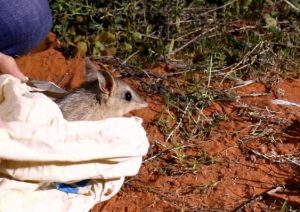Wildlife reintroductions to managed reserves help demonstrate what the environment was like before rabbits and feral predators were introduced to Australia.
The recent reintroduction of threatened, locally extinct bandicoots to Sturt National Park and the expansion of a reintroduced population of threatened bilbies in the Mallee Cliffs National Park, are signs of what is possible once feral animals are removed.
In the Sturt National Park (in north west NSW) every single rabbit, cat and fox was eradicated before a feral-proof fence was erected creating a 2,000 hectare enclosure. Once the newly arrived bandicoots are thriving in the protected area, some will be released into part of the park where they will be introduced to predators – hopefully training them to be ‘predator-wary’ and permitting further releases into other areas.
In the Mallee Cliffs National Park (in NSW near Mildura), 50 bilbies were reintroduced into a safe breeding are in 2019. The reintroduction was so successful that 60 bilbies have now been released from there into a much larger 9,500 ha safe haven within the park.
Feral-free reserves enable essential vegetation to recover and grow, generating feed and habitat for native animals, that are protected from competition with rabbits and predation by cats and foxes. They are like zoos on steroids – and signposts to how we might meet the even bigger challenge of replicating that success in much larger unfenced areas.
For more information, see:
- Bandicoots return to Sturt – UNSW Newsroom article
- Bilby population doubles at Mallee Cliffs – Australian Wildlife Conservancy press release.

A bandicoot being released into the wild. Image UNSW, Sydney
